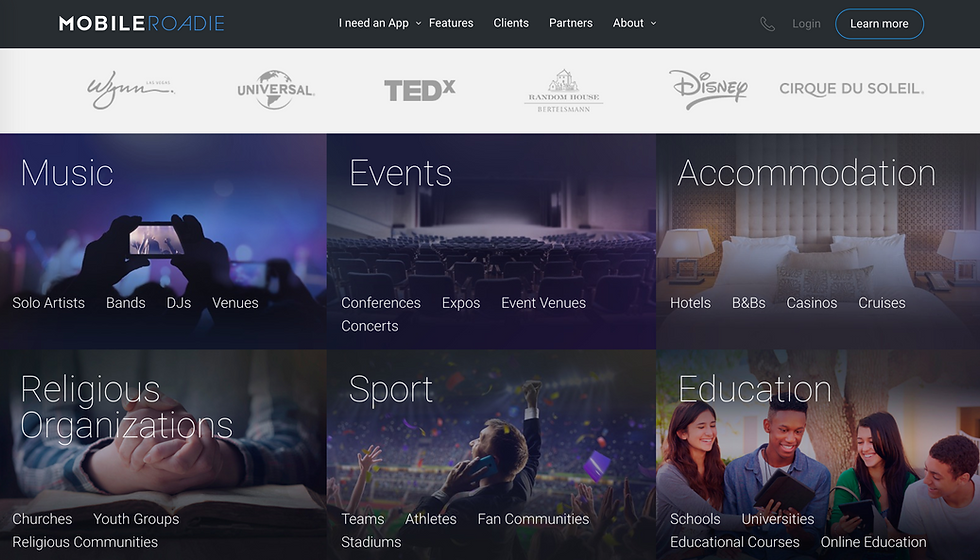Mobile Roadie: Wordpress for Apps
Web
ROLE
UX Design Intern
OVERVIEW
Mobile Roadie is essentially Wordpress for mobile apps. Based out of Los Angeles, the company caters to niche groups that would like to create communities on a mobile platform. Originally created for band 'roadies,' the consumer base has since expanded to a variety of businesses and groups.

PROBLEM
During my internship with Mobile Roadie we were receiving more inbound sales calls than we could handle. In addition, we had to schedule and make demo calls for the clients that had already purchased our product. The company was stretched thin and we needed to either hire more sales reps or evolve. I set out to find a solution for the demo-calls so our sales reps could focus on selling to prospective clients.

ON-BOARDING
Using some simple screen-casting software I was able to make a few instructional videos to help answer our new users most frequently asked questions. By doing this we could be proactive in our customer service and give new users something to chew on right off the bat.
This helped decrease demo calls by a significant amount. When asking for feedback our users said that the software seemed complex at first but after watching the videos they were able to get started very easily.

TAKEAWAY
Good on-boarding is a very finite art and as a designer you need to be aware of just how invested a user really is in your product. For us we were fortunate enough that our users had already paid money and as a result, very invested. Other sites that offer a free demo version need to offer a much lighter on-boarding experience or else their users will be deterred.
According to Ed Hallen, co-founder at Klaviyo, there are three primary goals in building a great on-boarding flow:
-
Take care of one-time setup. For example, on Twitter, this involves uploading a profile picture, entering a description, etc. This process should be painless–and better yet, fun!
-
Generate excitement about using the product in the future. Even if users get fully setup, you have to leave them excited enough to come back. This is one way in which Instagram excels–it immediately shows us beautiful pictures that make us want to take our own.
-
Teach the user how to use the product–by doing, not by words. Google’s introduction to MapsGL is a great example. Switch into MapsGL and you get a tutorial walkthrough that guides you through viewing historical landmarks around the world.

USER CENTERED DESIGN
On-boarding is a balancing act. You cannot treat your users like idiots or they will feel patronized and skip the tutorial leaving them lost down the road. On the other hand you cannot over-complicate the experience or users will become bored with the complexity of your product.
This is much easier said than done for two reasons. First, users aren't all the same. You wouldn’t teach your parents how to use Facebook the same way you would one of your peers.
The second reason is that the game is always changing and design trends are rarely stagnant. This is why it is imperative to understand exactly what your MVP is. As the designer it became clear that I myself could not teach others how to use a product I hadn’t mastered. This can be difficult coming in as a new designer you and your colleagues want to get started right away and see results immediately. From this experience I learned it is always best practice to use and try to master the product before you step foot in the office.
“When we’re not challenged, our performance suffers and we become disengaged.”
GENERATING EXCITEMENT
Another project I worked on at Mobile Roadie was creating a rewards system to help our clients delight their customers.
Not only was this a good way to help on-bard users but it also increased our revenue by creating a new up-sale opportunity.
The badges increased engagement and opened up a whole new world of possibilities for our clients.